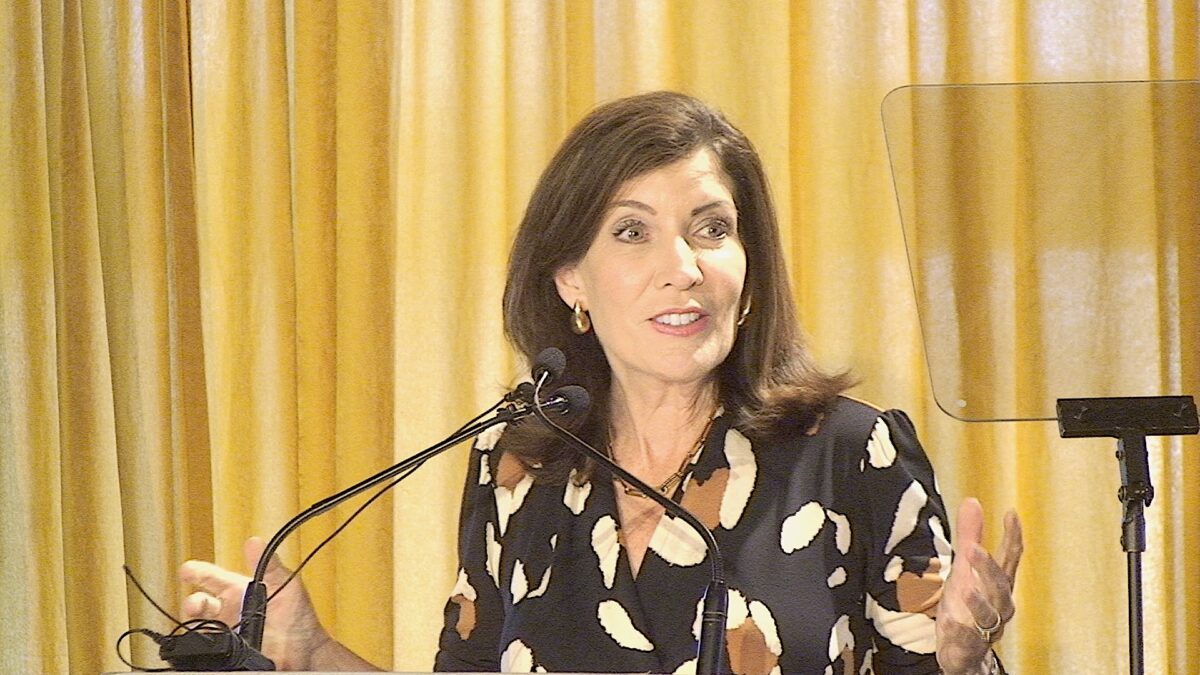Visiting Westchester County last week to stump for his proposed state budget, Gov. Eliot Spitzer took a more cautious stand than other New York Democrats on closing the Indian Point power plant and did not rule out nuclear generation as a source of the state”™s future energy needs.
In a wide-ranging talk with Westchester County Business Journal editorial staff, the governor also described his new property tax cap initiative and his administration”™s continued push to consolidate local government entities and services to rein in ever-rising local taxes.
He said paying for the Tappan Zee Bridge transportation corridor project will require the state to partner with private equity investors, while the state initially will invest $30 million to develop a reliable high-speed rail line between Albany and New York City. And Spitzer said he supported congestion pricing in New York City ”“ an issue expected to resurface this week among state legislators in Albany.
State officials in December filed a petition with the Nuclear Regulatory Commission to intervene in the licensing renewal process for the two Indian Point nuclear plants operated by Entergy Inc. New York is the first state formally to oppose a plant”™s licensing with the federal agency. Announcing the state”™s opposition in White Plains, Attorney General Andrew Cuomo said the plant was “a catastrophe waiting to happen” and should be closed immediately.
“Replacement power is the first issue,” Spitzer said. Before the plants are closed, the state must explore alternative energy sources, such as the Millennium Pipeline, a natural gas system being built from the Southern Tier to Rockland County, and long-distance suppliers such as Hydro Quebec, he said.
Spitzer said he will again this year introduce legislation reviving the state”™s expired Article X law, which streamlines the review process for new power plants. The proposed law died in the last legislative session.
As for its prospects of passage this year, he said, “I think the debate there will be what energy sources do you include” in its scope. “Nuclear could be included in that, theoretically.”
“The analysis should be, is it good from a global warming perspective,” Spitzer said. One much-touted replacement source, clean coal, “is looking a little less clean” in recent reports, he noted.
“I think everyone will agree IP2 (Indian Point) is poorly sited,” the governor added. “Certainly you would not build it there today.”
Spitzer said his Commission on Local Government Efficiency and Competitiveness has made “a lot of progress” in its first year, with 150 ideas for consolidation “that we”™re pushing right now.” Among those are proposals to pool towns”™ health care coverage and even to eliminate one county, Tioga, he said.
“We”™ve got a lot of local opposition,” he said. “It”™s hard to get from here to there.” Yet the consolidation measures “will save millions and millions of dollars,” he said.
Regarding his proposal, introduced in his State of the State Address last month, to put a cap on school district property taxes, Spitzer said, “We”™ve just got to do it.” Since 2001, property taxes have gone up 53 percent statewide while income has risen 27 percent, he said. Though he opposed a cap as attorney general three years ago, other options to ease the burden on taxpayers have not worked, he said.
A bipartisan commission headed by Nassau County Executive Thomas Suozzi held its first meeting last week. Spitzer said the commission and state will take a “more subtle” approach to the capping solution than was done with California”™s controversial Proposition 13 to make it work.
“They”™re not going to recreate the wheel,” he said. “There are 14 states that have it, so there”™s a historical record.”        Â
Spitzer said he will again push for a brownfields reform bill that would put a cap on tax credits for developers doing environmental clean-ups on project sites. The credits would be limited to cleanup costs rather than a percentage of the total project cost. Currently, “It”™s an economic development incentive rather than environmental cleanup incentive,” he said.
 A shovel-ready program included in the reform bill would provide state funds to municipalities doing brownfield cleanups on their own and effectively shift the focus of development on those sites. Spitzer, though, said a grandfather clause might be added to pay developers with approved project applications under the current formula.Â
  Â
Spitzer spiked rumors he will transfer bonding authority for nonprofit building projects from local industrial development agencies to the state Dormitory Authority. But the state is looking at broader reforms of IDAs that would eliminate overlapping local agencies and require contractors on IDA-financed projects to follow prevailing-wage and living-wage standards.
Regarding the Tappan Zee Bridge project, “The real issue is money,” the governor said. “That”™s the 800-pound gorilla: How are we going to pay for it?” He said “some sort of partnership” that includes private equity investment will be needed. In the state budget, “There isn”™t any source of money we can tap into.”
Spitzer said congestion pricing in Manhattan “is good policy. Driving in midtown is getting worse.”
Reminded that some fellow elected Democrats oppose the pricing plan, Spitzer smiled, “If it were my aspiration to keep everybody happy, I”™m in the wrong business,” he said.


















